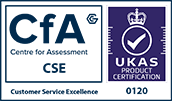Calvin Wells Archive and Book Collection
Archive reference: CAL
This collection has been transformed thanks to a Wellcome-funded project: Putting Flesh on the Bones.
Dr Calvin Wells: pioneering palaeopathologist
Dr. Calvin Bampfylde Wells (1908-1978) played an important role in developing the science of palaeopathology (the study of ancient disease). He began his career in medicine in London, training at University College London and University College Hospital and specialising in obstetrics. He also became interested in anthropology. In the period after the Second World War, when he had moved to Norfolk, Dr Wells began to combine these two strands, using his medical knowledge to interpret archaeological finds and so shed light on the diseases and injuries suffered by ancient people and sometimes also on modern health problems. His works include "Bones, bodies and disease" (1964), a general introduction to palaeopathology, besides more detailed journal articles and papers on specific excavations and topics. In 1984, his widow, Winifred "Freddie" Wells, donated his books, journals and papers to the University of Bradford.
The Archive
The Archive includes notes, reports and correspondence on archaeological sites, principally on skeletal material. Sites represented include North Elmham, Iona, Caerwent, Kingsworthy and Icklingham. There is also correspondence with archaeologists, museum staff, medical professionals, editors, and publishers, scripts of a series of programmes on palaeopathology, and some biographical material. There are many photographs of skeletal remains, and much more is coming to light.
Number 92 of the 100 Objects exhibition shares one of the most fascinating stories in the Archive: how CW discovered the secret of Skeleton A8.
The archive catalogue is available to search on the Archives Hub.
The Books
The book collection reflects Dr Wells' interests throughout his career, and is therefore relevant to those studying anthropology, medicine and archaeology, as well as specialists in palaeopathology. The books include works on early humans, on ancient civilisations and on archaeological topics such as frost tombs. The medical texts, which date from the 17th century to the 1930s, cover a variety of diseases and conditions, with a particular emphasis on obstetrics, osteology and diseases of the ear, nose and throat.
Find out more in Number 60 of the 100 Objects exhibition, which explores these remarkable works.


